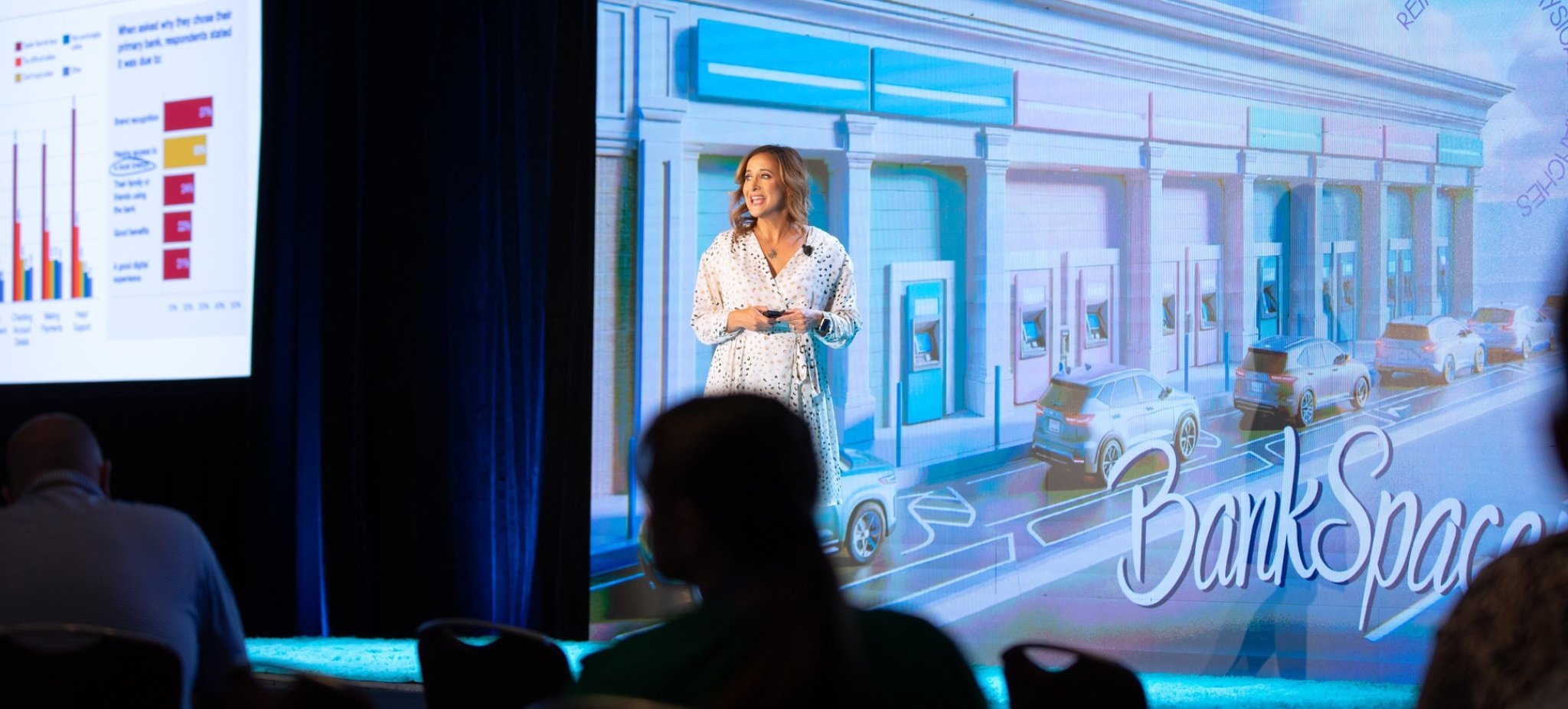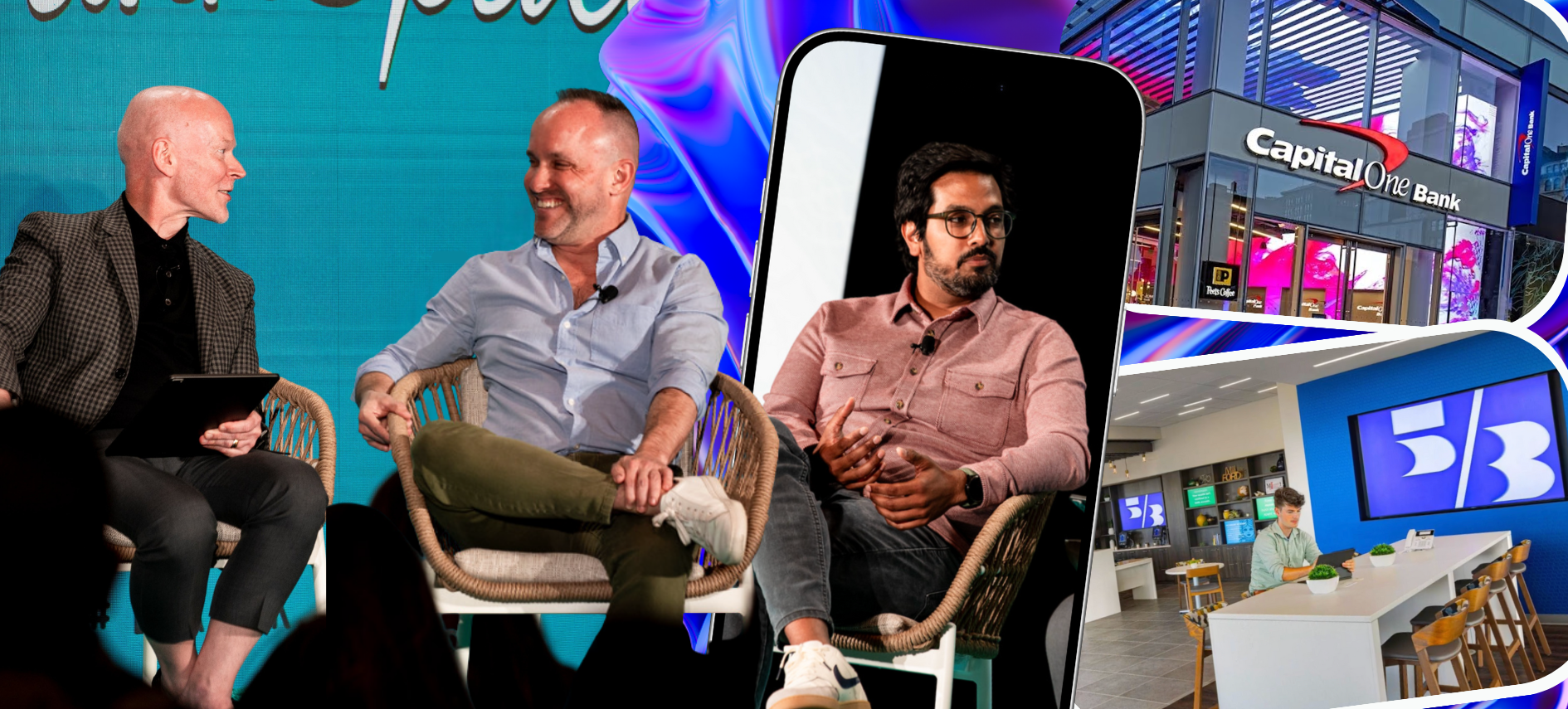In an era where digital transformation dominates headlines, a surprising trend is emerging in retail banking: the resurgence of physical branches. At BankSpaces, Gina Bleedorn, President and CEO of Adrenaline and a leading voice in branch experience and design, shattered common misconceptions about the "death of branches.”
Despite years of doom-and-gloom predictions - from Forbes' 2019 declaration of a "retail apocalypse" to the Wall Street Journal's 2022 suggestion that banks should ditch their branches entirely – the reality tells a different story. In a startling reversal, last year saw US banks add more net new branches for the first time in a decade. Giants like TD Bank, Bank of America, PNC, and JPMorgan Chase are not just maintaining their physical presence, but expanding it.
What’s the reason for this seemingly counterintuitive move in our increasingly digital world?
The answer lies in what Bleedorn calls the "branch paradox." While branches are indeed closing and networks are shrinking, banks are simultaneously opening new locations and growing their networks. Customers crave both digital convenience and human interaction. Branches, perhaps considered outmoded by some, are now viewed as essential to banks' future success.
The key to understanding this paradox is recognizing the evolving purpose of branches. They're no longer just transaction hubs; they've become beacons of brand presence, financial advice centers, and community spaces. In fact, 8 in 10 consumers cite branch presence as a top consideration when choosing a bank. It's not about replacing digital banking but complementing it with essential human touch points.
Perhaps most surprisingly, it's the digital-native Gen Z population that has the greatest commitment to the branch. Contrary to popular belief, Gen Z has far more physical banking interactions than Boomers do. They don’t shy away from questions and don't have the same dated beliefs about the branch as older generations. To them, visiting a branch is about asserting control over their finances and seeking valuable expert advice. Succinctly, they desire a person-to person connection in banking.
"Gen Z has nearly three times the banking interactions physically with that of Boomers,” Bleedorn said. “They are not afraid to ask and they do not have the preconceived notions of what the branch should be that their parents and grandparents do. They think ‘this is my money and shouldn't I be able to ask them [branch staff] stuff and be able to go to the place where my money is?’"

This shift in purpose is reflected in branch design. The focus has moved from transaction-heavy spaces with a bank of tellers to open floor plans that facilitate conversations and provide spaces for financial guidance. From an experience standpoint, the goal is to create a seamless experience that merges the digital and physical worlds.
However, this evolution comes with challenges. Many existing branches are outdated, with over half still operating in traditional formats. Unlike mobile apps, branches can't simply be updated with a software upgrade, Bleedorn said. They require significant investment and strategic foresight to transform. But, as she urged those in the audience, "You are spending the money anyway, so you might as well spend it smarter."
Bleedorn argued that the solution to creating better branch experiences lies in creating a "North Star" – a constantly evolving vision for retail delivery that breaks down organizational silos. It's not about having a static "branch of the future" mindset, but about continuous adaptation to meet changing consumer needs and expectations.
"You've got to think about big things while you're doing small things, so that all the small things go in the right direction,” she said. “A North Star can break down silos and provide alignment on a shared vision for retail delivery, for the branch, and, really, for the overall banking experience.”
"The future's never here, so don't have a ‘branch of the future,’ be intentional about constantly evolving.”
This approach requires a delicate balance. Banks must cater to customers' desire for human connection while leveraging technology to enhance, not replace, these interactions. They need to create spaces that serve as front doors to their brand, offer meaningful financial advice, provide human service for complex issues, and still handle basic transactions easily and efficiently.
"The consumer has settled on the new purpose of branches,” Bleedorn said. “Perceived convenience is the number one reason why people choose to do business with you.”
The implications of this shift are profound. For banks, it means rethinking their entire approach to retail strategy. It's no longer about choosing between digital and physical, but about creating a cohesive omnichannel experience. For consumers, it promises a more personalized, advice-driven banking relationship that combines the best of both worlds.
As the industry moves forward, the most successful banks will be those that embrace this paradox. They'll invest in branches not as relics of the past, but as pillars of their future strategy. They'll create spaces that are flexible, community-oriented, and deeply integrated with their digital offerings.
The branch isn't dead; it's evolving. In this evolution lies an opportunity for banks to differentiate themselves, deepen customer relationships, and drive growth in ways that a pure digital play cannot match. The future of banking isn't just digital - it's ‘phygital,’ and the branch is at the heart of this physical-digital evolution.
"This is not digital vs. human, this is human-led,” Bleedorn said. “These are spaces for people and are digitally enabled. It’s not banker-led so much as it's customer-led: what do they need and want?”
Posted by
Branching into Tomorrow – Together.
Exploring the Future of Bank Branch Design + Technology
April 19-21, 2026 | Bonita Springs, FL




-Dec-04-2025-03-32-25-8096-PM.png)
-1.png)




Comments